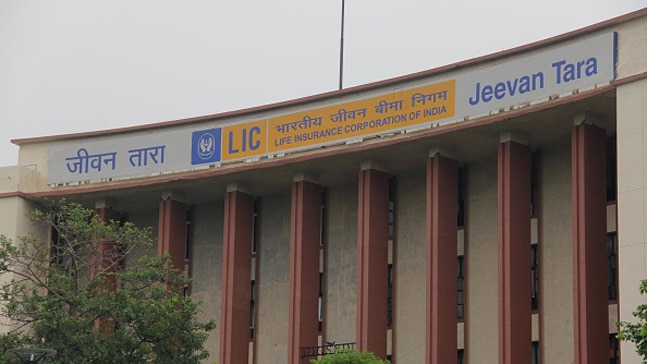The Indian casualty of the Russia- Ukraine war is the LIC IPO

The world is seeing unexpected news everyday since over a week due to the Russia-Ukraine war. It's been 8 days since Russia's invasion on Ukraine began and since then, the world has seen a lot of previously unseen consequences. Global markets have tumbled significantly, tough sanctions have been imposed on Russia (and Belarus), major companies have agreed to leave Russia or stop their operations, fuel prices have crossed $115/ barrel and the world nations are supporting Ukraine in their own ways.
While the world is still reeling under the pressures of this World War 3, Russia also launched an attack on Europe's largest nuclear power plant, which has created another wave of uncertainty altogether.
How is it affecting India's future financial plans? Well, it seems like the LIC IPO is the Indian casualty of the Russia- Ukraine war.
Tera Kya Hoga Kalia ?????? pic.twitter.com/Wlx3s6A667
— Professor (@DillikiBiili) February 24, 2022
In these dire circumstances, the Modi government is considering to postpone the launch of the LIC IPO, India's largest IPO yet.
WHY WAS INDIA BETTING ON THE LIC IPO
The Russia- Ukraine war has caused unprecedented volatile movements in the stock market and has become a big obstruction in India's plans of receiving Rs 65,000 Crores through the sale of government stake, when the LIC IPO would be launched.

The government had set a disinvestment target of Rs 1.75 Lakh Crore in last year's budget and to achieve that target, it was supposed to sell off numerous stakes in various public sector entities. But as the government missed its big target by a huge margin, the government set a smaller, practical target of Rs 65,000 Crores for the next fiscal year starting from April 2022 to March 2023.
Now LIC is one of these public sector entities in which the government currently holds 100% stake, of which it was expecting to sell 5%. This was also going to be India's largest IPO as of date. As the government was keen to achieve its targets for the year 2021-22, LIC had filed all documents on time, to launch the IPO before 31st March 2022.

The government wanted this IPO to be a largely accepted by the public and for the first time, even policyholders were about to get preferential allocation of LIC's shares.
(LIC is India's largest insurance policy seller and has market share of more than 66%. LIC and the government wanted to capitalise on this, as this was a great way to get those policyholders to buy shares of LIC. Also India would see new policyholders enter the equity market and this was a huge opportunity to increase equity market participation. Thus, LIC had started advertising since Jan 2022, about how policyholders needed to update their PAN on the LIC Portal and needed to have an active Demat account to be linked to their LIC policy. This would enable them to receive preferential shares of LIC at a discount, when the LIC IPO is launched.)
Also, LIC was supposed to get a lot of foreign funding from across the globe and special provisions in Indian laws were made because of this expected situation.
Now launching the IPO is not a small deal. Also, you don't launch an LIC sized IPO everyday (which btw is about 316.2 million equity shares on sale). Bada preparation and big hype toh banta hai.
But aise war situation me kaise IPO launch karenge?
WHY IS IT BEING PUSHED?

The Finance Minister Nirmala Sitharaman said that she would not mind having another look at the timing of the LIC IPO launch due to the Russia- Ukraine crisis. But why is it better to push this to the next fiscal year (i.e post March 2022)?
As Indian markets ended another volatile week, the million-dollar question is about the #LICIPO. As the FM hinted, there is a strong possibility that it gets put off next financial year. Meanwhile, #crudeoil at $115/bbl is keeping markets jittery. #Nifty #Sensex #StockMarkets
— Sandeep Bhardwaj (@srajb) March 4, 2022
Volatile stock markets have been the scene of the week because of the Russia- Ukraine crisis and to put it nicely:
1. India’s Volatility Index shows that the India's market volatility in the next 30 days will range between 28-28.5. A stable market usually reflects a volatility index of around 15.
2. Commodity markets have seen a great rise in prices in markets dealing in Wheat, Metals, Crude oil, and Edible oil. Why? Well, Russia's stature as a top supplier in oil, gas, metals and grain has meant that harsh sanctions applied to Russian entities has derailed critical resource supply chains.
3. Since the Russian invasions, Dutch gas prices have more than doubled while Coal prices have risen by 85%. Aluminium and Nickel have breached their 10 year price points while stock markets in Japan, US and EU have also dropped significantly.
4. Price of Brent Crude Oil went up to more than $115/barrel after decades, wheat prices in the commodity market gained 7.2% which is the highest since 2008, whiel palm oil prices peaked to new highs too as there are restrictions on supply of sunflower oil from the Black sea.
5. The Sensex fell by 10% from its mid- January peak of over 61,000 levels as foreign portfolio investors exited the market.
6. The Rupee weakened to the Dollar to Rs 76.21 / $ and gold prices also jumped.

These volatile fluctuations have just been the impact in the first week of the Russian attack.
As it is obvious that in these fluctuating times, survival and stability is a priority over investing in foreign companies, atleast for those outside India. Also, fluctuating environments can impact share valuations and are not the best for the launch of India's biggest IPO. So, it looks like it might be better if the IPO is postponed to a time when the situation is more stable.

